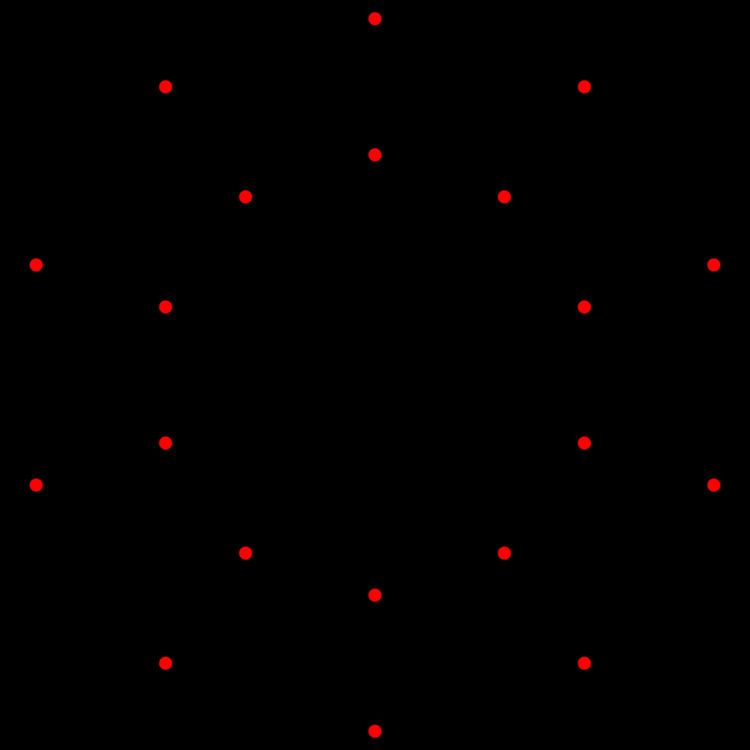 | ||
In geometry, the regular skew polyhedra are generalizations to the set of regular polyhedron which include the possibility of nonplanar faces or vertex figures. Coxeter looked at skew vertex figures which created new 4-dimensional regular polyhedra, and much later Branko Grünbaum looked at regular skew faces.
Contents
Infinite regular skew polyhedra that span 3-space or higher are called regular skew apeirohedra.
History
According to Coxeter, in 1926 John Flinders Petrie generalized the concept of regular skew polygons (nonplanar polygons) to regular skew polyhedra.
Coxeter offered a modified Schläfli symbol {l,m|n} for these figures, with {l,m} implying the vertex figure, m l-gons around a vertex, and n-gonal holes. Their vertex figures are skew polygons, zig-zagging between two planes.
The regular skew polyhedra, represented by {l,m|n}, follow this equation:
2*sin(π/l)*sin(π/m)=cos(π/n)A first set {l, m | n}, repeats the five convex Platonic solids, and one nonconvex Kepler-Poinsot solid:
Finite regular skew polyhedra of 4-space
Coxeter also enumerated the a larger set of finite regular polyhedra in his paper "regular skew polyhedra in three and four dimensions, and their topological analogues".
Just like the infinite skew polyhedra represent manifold surfaces between the cells of the convex uniform honeycombs, the finite forms all represent manifold surfaces within the cells of the uniform polychora.
Polyhedra of the form {2p, 2q | r} are related to Coxeter group symmetry of [(p,r,q,r)], which reduces to the linear [r,p,r] when q is 2. Coxeter gives these symmetry as [[(p,r,q,r)]+] which he says is isomorphic to his abstract group (2p,2q|2,r). The related honeycomb has the extended symmetry [[(p,r,q,r)]].
{2p,4|r} is represented by the {2p} faces of the bitruncated {r,p,r} uniform 4-polytope, and {4,2p|r} is represented by square faces of the runcinated {r,p,r}.
{4,4|n} produces a n-n duoprism, and specifically {4,4|4} fits inside of a {4}x{4} tesseract.
A final set is based on Coxeter's further extended form {q1,m|q2,q3...} or with q2 unspecified: {l, m |, q}. These can also be represented a regular finite map or {l, m}2q, and group Gl,m,q.
